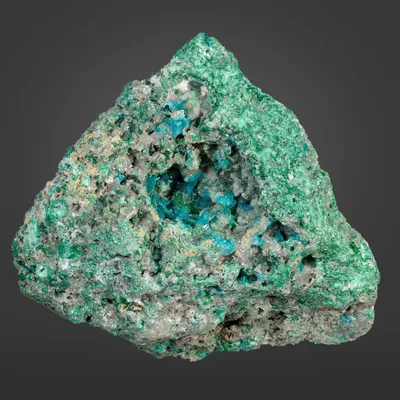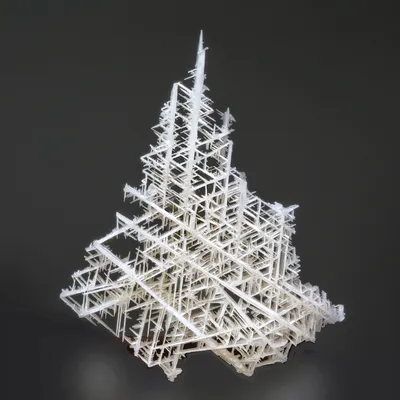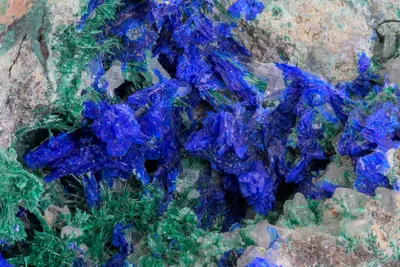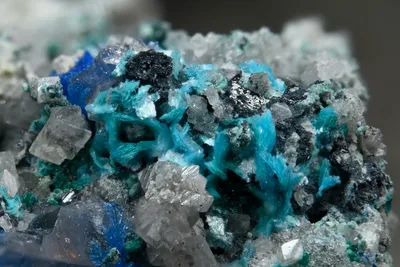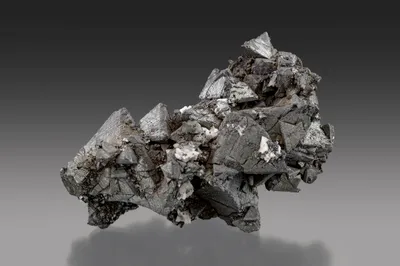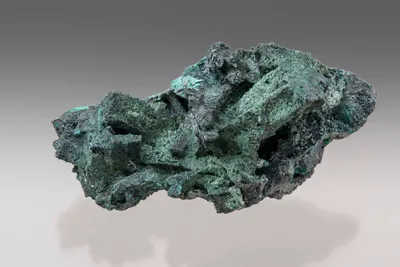Mineral Species
Brochantite
Type Locality
No
Composition
Cu2+4(SO4)(OH)6
Crystal System
Monoclinic
Status at Tsumeb
Confirmed
Abundance
Somewhat rare
Distribution
First oxidation zone
Paragenesis
Supergene
Entry Number
Species; TSNB62
General Notes
Although brochantite is regarded as somewhat rare at Tsumeb, it was relatively common in the upper portion of the first oxidation zone.
Maucher (1908a) noted the occurrence of velvety surface coatings of brochantite from the upper levels of the first oxidation zone and commented on associations with anglesite, cerussite, caledonite and linarite.
Klein (1938) recorded brochantite from the surface to a depth of 130 m (5 Level) and highlighted the occurrence of "… beautiful encrustations…" intergrown with malachite.
Strunz et al. (1958a) and Strunz and Tennyson (1967) list brochantite as occurring in the first oxidation zone only.
Bartelke (1976) observed small, inconspicuous light green brochantite crystals in highly decomposed sulphide ore and noted that brochantite is almost always associated with linarite. He also noted the occurrence of brochantite with other secondary minerals on the surface of tennantite pseudomorphs (after enargite); these pseudomorphs are almost certainly the specimens from 34 and 35 levels alluded to by Paar (1973).
Pinch and Wilson (1977) commented that brochantite "Forms green to blackish-green crystals to 13 mm" and that "… some superb specimens have been found".
Keller (1984) noted the common association of arsentsumebite with dark green crystals of brochantite 1-2 cm long (and presumably from the first oxidation zone). He also commented on the presence of brochantite in the "linarite paragenesis" developing on the surfaces of tennantite pseudomorphs after enargite.
Gebhard (1999) cautioned that brochantite is readily confused with malachite. He noted specimens with brochantite crystals to 40 mm in length penetrating white anglesite crystals which he considered best of species. He also described a late 1980s discovery of pyramidal black-green brochantite (to 5 mm in diameter) associated and intergrown with emerald-green arsentsumebite.
Associated Minerals
anglesite; arseniosiderite; arsentsumebite; azurite; caledonite; cerussite; chenevixite; connellite; covellite; devilline; enargite; gypsum; kasolite; langite; linarite; malachite; mottramite; posnjakite; schulenbergite; serpierite; tennantite-(Cu) (?); tennantite-(Zn); tsumcorite
Pseudomorphs
Brochantite has been reported to form pseudomorphs after the following minerals: azurite (rare); gypsum (rare).
